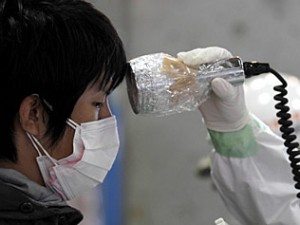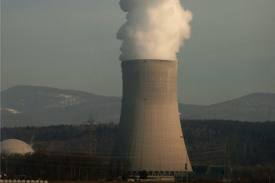The Chernobyl disaster set the index for unnatural catastrophies, and while nuclear reactors aren’t generally accident-prone, it’s devastating when something does goes awry.
 By Derin Richardson, LuxEco Editorial Assistant
By Derin Richardson, LuxEco Editorial Assistant
If you’ve been following the tsunami disaster in Japan lately, you’re probably somewhat confused about the dynamics of the situation. While we’re no experts on nuclear physics or the Chernobyl disaster here at LuxEco Living, here’s a basic, tentative guide on the radiation involved and current events.
Nuclear Reactors
Nuclear power cores are well-protected by thick walls, however if it melts for any reason, the byproducts it contains will continue to release ionizing radiation until it cools.
Reactor cores need auxiliary pools of water to diffuse its heat and prevent it from melting through protective layers. One of the pools in the Fukushima Daiichi plant caught fire, releasing byproducts directly into the atmosphere.
Fuel Rods
Though the fires have been extinguished, Japanese officials say their main concern is keeping the the fuel rods cool enough to avert a meltdown. Though they are encased in protective containers themselves, the likelihood of the steel pressure vessels exploding is still a concern. The danger lies in the rods chemically reacting to their enclosures, creating radioactive byproducts in the process, and increasing pressure in the main core.
The cooling period after a nuclear disaster is invariable; sometimes taking days, even weeks, depending on the situation.
So far, there have been three pressure-related explosions. The top and upper walls of Fukushima’s nuclear reactor no. 1 exploded due to unreleased pressure building in the fuel rod containers. Boric acid and sea water were used in an attempt to rapidly cool them, however to no avail.
These explosions, if continued, will spike the radiation levels and increase hazards.
 Radiation
Radiation
Ionizing radiation is a type of radiation consisting of electromagnetic waves or particles that have enough energy to separate themselves from certain electrons or neutrons, thus making them free radicals, and able to travel freely through the atmosphere.
Gamma rays are a type of electromagnetic, ionizing radiation that penetrates certain levels of protection, including human skin, due to having an intense frequency wavelength. This would cause radiation absorption and sickness as opposed to topical skin burning, or UV light exposure.
Since it’s carcinogenic, the danger of developing cancer is compounded by the amount of saturation caused by a radionuclitide, or nuclear reactive materials released in the atmosphere.
 Danger Assessment
Danger Assessment
“Based on the type of reactor design and the nature of the accident, we see a very low likelihood—really, a very low probability—that there’s any possibility of harmful radiation levels in the United States or in Hawaii or any other U.S. territories,” said Gregory Jaczko, the chairman of the NRC, in a recent Bloomberg article.
The LD50–or amount of radiation that is lethal enough to kill half of a population–ranges from 210 to 400 rem (or rads). A relatively high number, however residents have been exposed to 0.1 rem at most. This can change, however, if efforts to cool the rods continue to fail.
Safety officials discovered trace amounts of nuclear radiation in food and other products, however the danger of falling ill is not imminent.
Recent tests show that the surrounding plant’s sea water has a radioactive iodine-137 saturation that is 126.7 times higher than current safety limits, though it is still safe for consumption according to Yukio Edano, Japan’s Chief Cabinet Secretary.
The incident is currently at a Level 4 rating according to the International Nuclear Event Scale (INES).
Progress
Nuclear engineers managed to stabilize and reconnect all six reactors to the auxiliary electrical grid, though they are still not ready for activation.
Power has been restored to reactor no. 3’s control room and is currently being used as a base of operations. Engineers remain vigilant of this reactor, as it contains a volatile mixture of uranium and plutonium.
Unlike the Chernobyl disaster, which was the result of human error, the Fukushima disaster was caused by a series of natural events–an 8.9 magnitude earthquake caused a massive tsunami to occur. Due to this, the damage is much more manageable.












